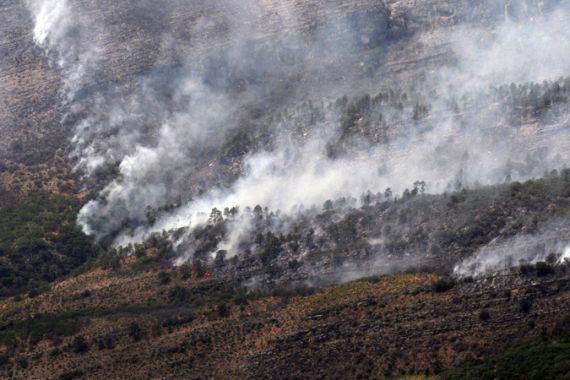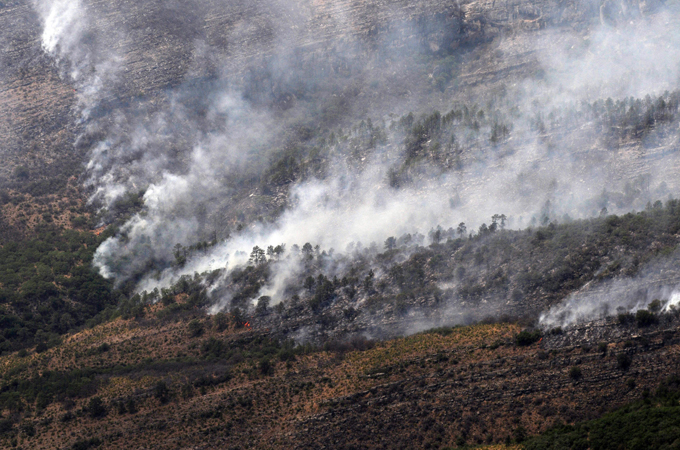Wildfires continue to ravage N America
Parts of Mexico and the US are still burning out of control.

 |
| Over 1.5 million acres of land have been affected in Texas alone |
It’s the time of year for wildfires in Mexico and the southern US states and this year they’ve been particularly active.
Since April 6 over 1.5 million acres of land have been affected in Texas alone.
Keep reading
list of 4 itemsAfter the Hurricane
World’s coral reefs face global bleaching crisis
Why is Germany maintaining economic ties with China?
The problems this year have been exacerbated by the La Nina conditions in the Pacific Ocean. La Nina conditions bring a slight drop in the surface temperatures of the Pacific. It’s a small change in temperatures, but a significant one that impacts the weather around the world.
This year’s La Nina event has brought flooding to Australia and South Africa, as well as droughts to the east of Africa. For the US, La Nina conditions typically would bring a dry spell to the south coast and it certainly has been dry this year. Winter was very dry, in fact Texas suffered its driest March on record. This means all the vegetation is parched, transformed to tinder sticks.
In April, the average temperatures in the region start to rise. The average maximum for the month in Dallas is 24C and for Houston is 26C. As the temperatures rise, and the winds pick up, the fire hazard increases.
According to Governor of Texas, Rick Perry, as of April 16, firefighters have already responded to an astonishing 7,807 fires. It’s not just grassland which is being hit. Several houses have also been destroyed and the governor is now requesting there be a federal declaration of a major disaster.
Texas isn’t the only state which has suffered from wildfires recently. New Mexico has seen fires raging and in Northern Florida, a wildfire forced the major I-95 highway to close.
Over the border in Mexico, fires are burning out of control too, as the country endures its worst outbreak of wildfires in years. Aircraft are being used to dump vast amounts of water on the fires.
There is now concern that the fires could reach the protected area known as Maderas del Carmen, an environmental reserve in the northern state of Coahuila. Efforts are being made to prevent this from happening, and heavy machinery is being used to open gaps in the vegetation, to stop the blaze from spreading.
Even as the severe storms barrel across the States, the vast majority of the rain will be to the north of the region which is crying out for rain. For Mexico, Texas and Florida, the rain is likely to be patchy at best.
The rain is unlikely to return until the La Nina conditions ease, but although La Niña is gradually weakening, it is still expected to last for the next few months at least. This means that the drought conditions are likely to continue well into the summer.